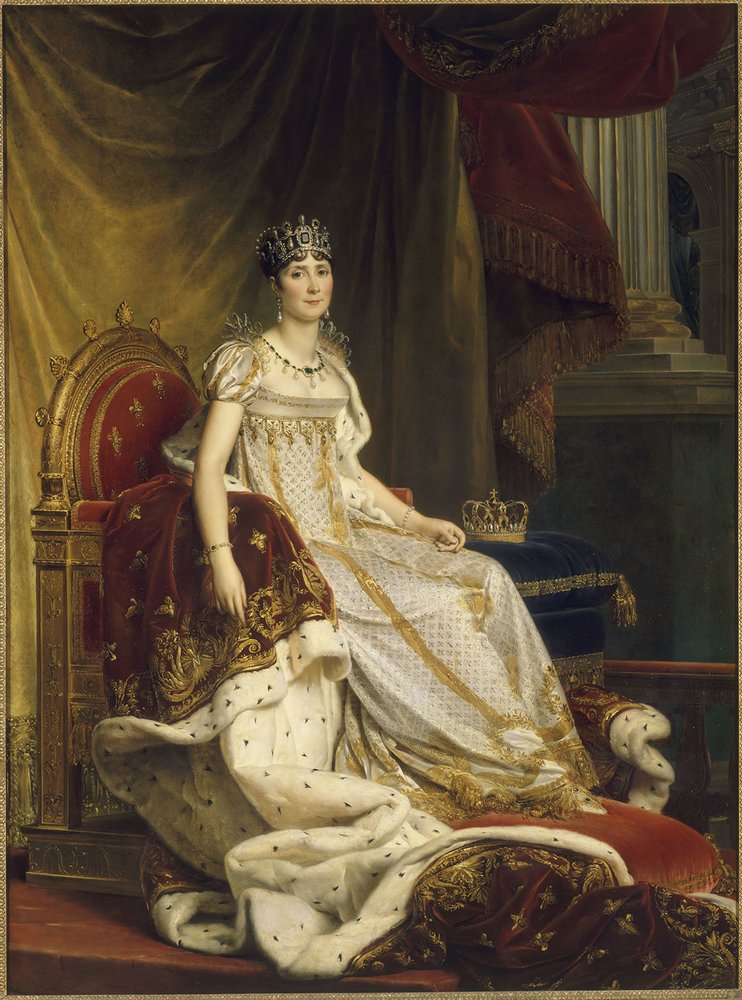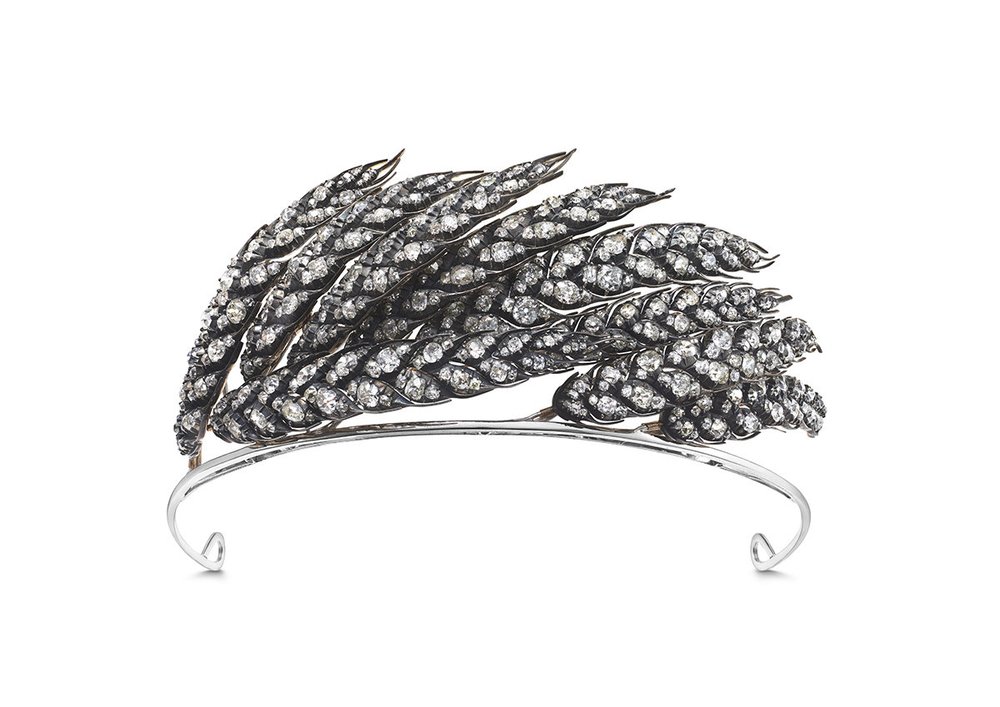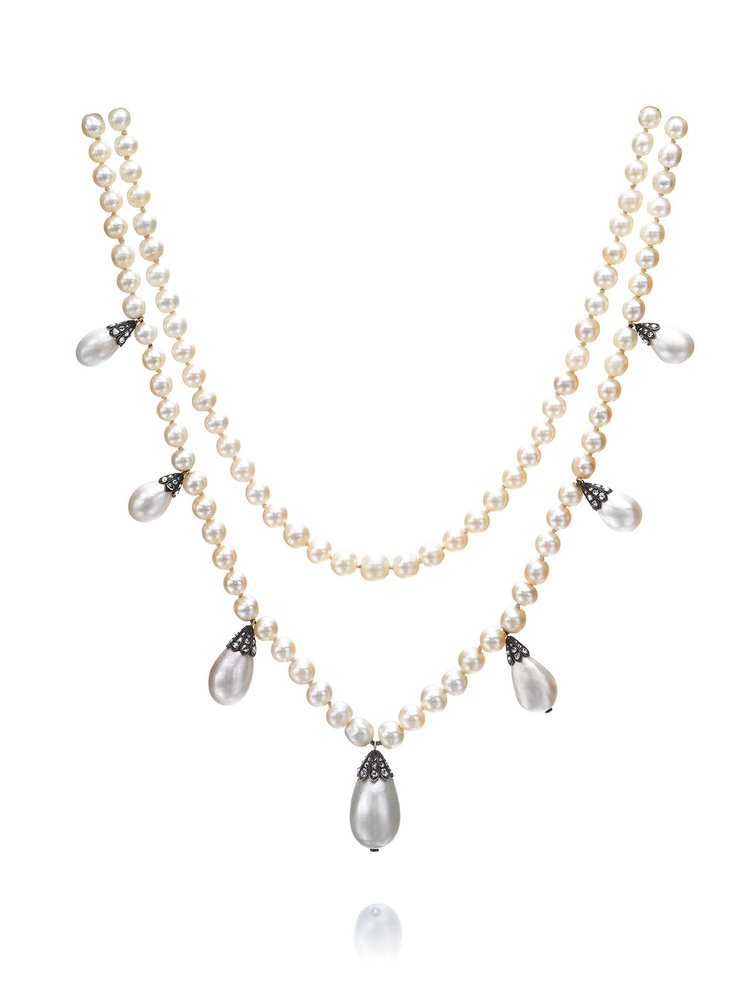May 18, 2021
Empress, queen, mother, style icon, botanist, and conservationist a full two centuries ahead of that movement, Joséphine de
Beauharnais packed more into her life than most regiments commanded by the man who was to make her the Empress of the French, Napoleon Bonaparte.

Her remarkable life is the subject of an excellent new exhibition entitled 'Joséphine & Napoleon: an (extra)ordinary story,'which opens Wednesday, May 19, staged by jeweler Chaumet – it’s a clever recounting using a unique blend of exquisite jewelry, rare oil paintings, swords, snuff boxes, personal effects and intriguing documentation.
“We thought the occasion of Napoleon’s bicentenary was a fitting moment for this exhibition. Joséphine was a truly remarkable woman, who managed to create one of the world’s greatest gardens while also being a leader in décor and style, and an empress,” explained Jean-Marc Mansvelt, the CEO of Chaumet. May 5 marked the 200th anniversary of Napoleon’s death in a dank house on the windswept South Atlantic island of Saint Helena. His last words were, 'France, l'armée, tête d'armée, Joséphine'' - 'France, the army, head of the army, Joséphine.'
The expo, which features 150 pieces, is a telling evocation of their love story and a presentation of some remarkable pieces by both Chaumet, and François-Regnault Nitot, the son of jewelry house’s founder, who designed tiaras and bracelets and a pure gold Gothic belt, and a remarkable gold, bloodstone, and tortoiseshell ceremonial sword for Joséphine and Napoleon.

Both of them were islanders – Napoleon from Corsica and Joséphine from Martinique - who came from obscure backgrounds to the apex of society, as the dramatic oil paintings by Gérard, David, Garneray and Prud’hon of the pair bedecked in ermine and diamonds in multiple palaces makes clear.
One telling painting by Vibert shows the pair sat beside Pope Pius VII, two cardinals, a marshal and a minister studying miniature mannequins dressed in exact copies of grand ceremonial robes to work out the placement and seating at Napoleon’s coronation as emperor in 1804, in Notre Dame. Napoleon even commissioned a famous oval tiara for Pius VII from Nitot, which sits in the Vatican Museum.
“Many of these paintings were as much political statements as works of art. They operated like social media two centuries ago,” argued Mansvelt, in an informed tour of the exhibition.
The pair first met in 1795, before Napoleon embarked on the successful Italian campaign that would turn into a popular hero. During which he wrote daily passionate letters.

“What, then, is your strange power, incomparable Joséphine? One of your thoughts poisons my life, rends my heart with the most apposing wishes; but a stronger feeling, a less somber humor binds me again… Have you thought only twice of me? I give you three kisses, one on your heart, one on your mouth, one on your eyes,” penned Napoleon in 1796.
At the time, Joséphine was already a widow of a disastrous marriage to the Vicomte de Beauharnais, who was guillotined during the revolution. She was even imprisoned until five days after his execution.
A trained botanist, her admiration for the study of utilitarian wheat led to a vogue for wheatsheaf tiaras, several of which are featured, from Nitot’s 1811 version to later Crèvecoeur, or Heartbreaker, tiaras. Joséphine turned her home east of Paris at Malmaison into one of the era’s finest gardens, with a wider variety of species than the Jardin des Plantes. The wily empress even employed police to seize species at French ports at her behest. While her menagerie consisted of black swans, kangaroos, llamas, Chinese golden pheasants and a female monkey in a dress coat that was taught to eat with a fork.
Nitot grew to become, in his own words, “the much-envied supplier of the imperial court,” as is apparent in this exhibition – from the malachite cameo from 1810 finished with pearls and tortoiseshell. Joséphine also worked closely with sculptors and interior decorators to develop the Empire Style, turning her court into Europe’s leader in the arts, as she became the first great French female art collector. While the couple’s commissions also helped fuel luxury goods marques seen in Sèvres porcelain or delightful slippers with gros-grain trim.

Ideally, Chaumet’s headquarters are at 15 Place Vendome, the storied square where stands the triumphal column of Napoleon, made of 1,200 guns seized from enemies and melted down. Joséphine’s statue in her native Martinique, however, was torn down by Black Lives Matter activists, many emphasizing that Napoleon reintroduced slavery eight years after it had been banned as part of the Revolution. Nor has his misogyny been forgotten. Though he gave several women important political tasks, his Code Napoleon made women subservient to their husbands, and subject to very different standards if they divorced.
Ironically, it was Joséphine's offspring who were to become royals, and not Napoleon’s. Her daughter Hortense married Napoleon’s younger brother Louis, and their son became Napoleon III, Emperor of the French. While she was also the grandmother of Amélie of Leuchtenberg, the Empress of Brazil. Distant descendants also sit on the throne of Denmark, Sweden, Belgium and Norway. A cameo tiara with emblems from Greek mythology made by Nitot for Joséphine was even worn by Crown Princess Victoria of Sweden on her wedding day in 2010.
Though deeply enthralled by Joséphine, Napoleon was often away in battle, underlined by one of his wonderfully battered black cocked hats. Historians believe that Joséphine had a miscarriage while attempting to visit Napoleon at his insistence in Italy. As she was unable to have any more children, and Napoleon was obsessed with having an heir, he announced to her at an 1809 dinner that he would divorce her. A painfully sad letter on display shows her written acceptance; beside the empress fan that she smashed in anger when first hearing the bad news.
